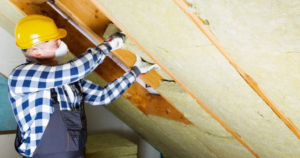What Is a Lawyer?
A lawyer is a person who offers advice about the law, prepares legal documents, and represents clients in court. They may charge a flat fee for their services.
A lawyer’s responsibilities as a client representative, an officer of the legal system, and a public citizen are usually harmonious. He or she should zealously advocate for clients while maintaining confidentiality and respecting the legal process. Click https://askthelawdoc.com/ to learn more.

A lawyer is a person who offers advice about the law and represents individuals in legal matters. They are also known as attorneys and attorney-at-law. Understanding the differences between lawyers and attorneys is important for anyone who wants to work in the legal profession. The terms are often used interchangeably, but there are significant distinctions between them. Understanding these differences can help people choose the best professional for their needs.
In the United States, the term “lawyer” is often used to refer to a professional who is licensed to practice law. In other countries, the term may also be used to describe someone who has passed a bar exam. Regardless of the terminology used, a lawyer is a person who has completed the required education and training to practice law.
The job of a lawyer encompasses many different tasks, but the most important is advising clients about their rights and options. This includes interpreting laws, regulations, and precedents in light of the facts of a case or situation. In addition, lawyers must prepare and draft legal documents such as contracts, agreements, pleadings, briefs, and legal opinions. They must also ensure that these documents are accurate and comply with applicable laws and regulations.
Some lawyers specialize in particular types of cases or issues, while others represent clients in both criminal and civil proceedings. Whether they are representing a plaintiff or defendant, they must be familiar with all aspects of the law and process. Lawyers must also be prepared to conduct research and negotiate with opposing counsel.
Lastly, a lawyer should be mindful of deficiencies in the administration of justice and devote their professional time and resources to ensuring equal access to our system of law for all people. They should also use their civic influence to promote a society that is safe and just for all.
While most people think of lawyers as those who argue in court, not all lawyers do this. In fact, the vast majority of lawyers’ work takes place outside the courtroom. They spend a lot of their time researching, writing, and preparing legal documents. Some lawyers even provide legal advice for free, which is called pro bono work.
A lawyer represents a client in court
The process of representing a client in court involves many different steps. Lawyers prepare and file legal papers, investigate facts, interrogate witnesses, and argue questions of law and fact. They also negotiate settlements and other agreements that may settle a case without going to trial. They also help clients arrange their legal rights and liabilities through wills, contracts, and corporate bylaws.
In addition to their duties as lawyers, some states require that lawyers abide by strict ethical codes. These rules usually require that attorneys zealously protect and pursue their clients’ legitimate interests, within the bounds of the law. They are also expected to manage costs and counsel their clients against expensive litigation strategies if practical nonlegal alternatives exist.
Attorneys are often paid by the hour, but some lawyers charge a flat fee or a contingency fee. In either case, they are obligated to negotiate a written fee agreement with their clients before beginning work. It is important to understand the total cost of your representation before hiring a lawyer. You should also keep in mind that a lawyer’s fees are generally tax-deductible.
During the course of a legal case, lawyers must be able to objectively evaluate information and arguments from both sides. This is not easy, as emotions can blind a person to the truth. However, a skilled lawyer can create positive outcomes for their clients by acting as an impartial third party. This objectiveness can be particularly helpful if the case is complex, as it allows lawyers to focus on the most critical issues.
Whether representing a plaintiff or defendant, a lawyer is required to comply with the law in all proceedings. They must zealously represent their clients and respect the interests of other parties in the litigation. They must also remain informed of current law and changes in the laws that affect their practice. If they fail to do so, they may be subject to disciplinary action. In some cases, the lawyer may even be subject to criminal prosecution. In addition, a lawyer must not reveal confidential information to anyone who is not their client or a witness. This violation of the Rule of Professional Conduct can result in a serious ethics complaint or even a revocation of their license to practice law.
A lawyer prepares legal documents
Legal documents are essential for businesses, individuals, and organizations. They can be used to set up companies, purchase property, or negotiate contracts. Lawyers prepare legal documents for clients to ensure that they comply with the law and protect their interests. They may also draft documents to resolve disputes without going to court.
While it’s possible to draft some legal documents on your own, you should always consult an attorney before executing any legally binding document. This will save you time and money and ensure that the document meets all of the requirements of your jurisdiction. In addition, an attorney can give you more detailed advice about the legal implications of your document.
There are many types of legal documents, but most are created for a specific purpose. Some are designed to resolve a dispute or create a new company, while others are enforceable in court. Regardless of the type of document, it should contain all relevant information to prevent misinterpretation or misunderstanding. In addition, it should be clearly drafted and should meet legal standards. This is why a lawyer’s job is so important.
The drafting of legal documents is a complex process that requires thorough preparation. It is also important to consider the audience of the document and its intended purpose. For example, an appellate brief needs to be clear and concise, while a negotiation letter should not provoke a hostile response through disrespect or wasting the recipient’s time.
A lawyer’s responsibilities are defined by the Rules of Professional Conduct and substantive and procedural law. These principles include the obligation to zealously represent a client’s legitimate interests within the bounds of the law. They also include the obligation to act competently, promptly and diligently.
Streamlining legal documentation can help lawyers and support staff save valuable time. It can also reduce human error by ensuring that all documentation follows the same format. For example, a law firm could use eSignature solutions or client intake software that includes templates to streamline the documentation process. In addition, a cloud-based law practice management system like Clio can help with legal documentation by providing features like Matter Stages, visual work-in-progress boards that provide greater insights and improved oversight.
A lawyer charges a flat fee
When compared to hourly billing, flat fees are less expensive for clients and offer price certainty. Attorneys are incentivized to work more quickly and efficiently under this arrangement, which maximizes profitability. However, there are a few considerations to keep in mind when choosing this type of fee structure.
First, lawyers must determine the scope of their work before charging a flat fee. This may include a thorough interview with the client or reviewing existing documents. The fee can be set by an agreed-upon amount, a percentage of the total cost, or in installments tied to the progression of the case. Attorneys should always document their scope of work in writing to avoid confusion or misunderstandings.
Flat fees are a popular alternative to hourly billing, especially in transactional legal areas like copyright registrations and basic will drafting. They are also becoming more common in complex criminal cases and certain civil litigation matters, such as uncontested divorces. A recent survey found that 67% of consumers want to be offered flat fees for legal services.
The main reason for the popularity of flat fees is that they are easier to explain and understand. They are also easier to bill, which can lead to improved realization and collection rates. Lawyers should consider their clients’ preferences and capacity when choosing a flat-fee billing model.
While many clients prefer the predictability of a flat fee, others may be more comfortable with an hourly rate that accurately reflects their work complexity. In addition to client preference, it is important for lawyers to consider their own financial goals and workload capacity when choosing a billing method.
Using a flat fee structure is also beneficial for law firms because it reduces overhead and administrative costs. Instead of tracking every minute spent on a case, attorneys can spend more time focused on other pressing issues. This allows them to increase their revenue and take on more cases. In addition, it provides a more accurate picture of how much the firm is earning. Lawyers who use a flat-fee billing structure can also leverage modern law firm technology to streamline their processes and improve productivity.








